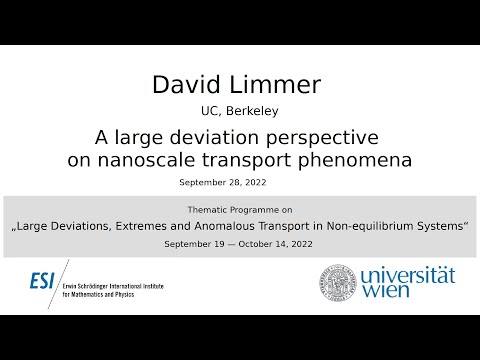Description:
Save Big on Coursera Plus. 7,000+ courses at $160 off. Limited Time Only!
Grab it
Explore a comprehensive lecture on nanoscale transport phenomena from a large deviation perspective. Delve into the challenges of understanding transport processes in complex nanoscale systems, such as ionic conductivities in nanofluidic devices and heat conduction in low-dimensional solids. Learn about a systematic framework for computing distributions of time-integrated currents in molecular models and relating cumulants to nonlinear transport coefficients. Discover how this approach, based on dynamical large deviation theory, provides a microscopic basis for going beyond traditional hydrodynamics when local equilibrium assumptions break down. Examine topics including the structure of fluctuations in nonequilibrium steady-states, numerical tools for systems far from equilibrium, heat transport in low-dimensional carbon lattices, and the generalization of the Onsager-Wien effect. Gain insights into how current fluctuations determine equilibrium response but not nonequilibrium response, and how high solvent friction suppresses field dependence in nanoscale transport phenomena.
Read more

A Large Deviation Perspective on Nanoscale Transport Phenomena
Add to list
#Science
#Chemistry
#Computational Chemistry
#Molecular Dynamics
#Physics
#Fluid Mechanics
#Hydrodynamics